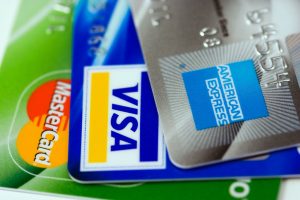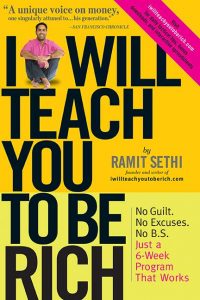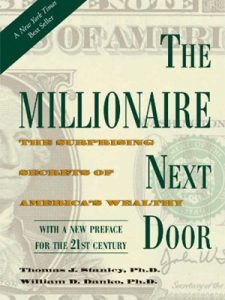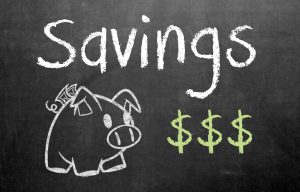The idea of getting something for nothing has always been the holy grail.
The goose that lays golden eggs. The Fountain of Youth. Turning lead into gold. All these stuffs of legend involve getting something amazing without having to expend any resources.
We usually have to spend our time or money in order to get something of value. If you could find something that automatically rewards you while not expending any effort, you will be immortalized into greatness.
However, there is something pretty close. And almost anyone can do it: Using reward credit cards for all of your purchases.
Many people use credit cards to make purchases at the grocery store, doctor’s office or shopping online. Why not use a credit card that earns you rewards for those purchases you make anyway?
It’s almost like getting something for nothing.
But there is a little upfront work that needs to be done. Not too much work, but once everything is in place, anyone can easily get at least a 2% return on every single purchase they make without paying any extra to a credit card company.
But it all begins with a plan.
Have a Strategy
Anyone who uses credit cards needs to have a strategy. At best, using any random card just because you have it will not really get you anywhere. At worst, it can get you into credit card debt.
If you don’t have a coherent credit card strategy, you might as well save yourself the trouble and just use cash.
The lowest credit rate interest rates I’ve seen are around 8%. The highest I’ve seen are about 30%. There is absolutely no reason to get into credit card debt if you’re somewhat mindful of your spending and you have a strategy.
My philosophy on credit cards is pretty simple:
-Use credit cards for every purchase for great purchase protection that cash will never give you.
-Look at each statement as it comes in to track your spending and make sure you’re not busting your budget.
-Use a rewards credit card that will give you the best reward depending on what you’re buying. For example, if a card gives you 3% cash back on gas, only use that card and not another one when you buy gas.
–Pay off your complete statement balance in full each and every time. If you don’t do this step and start building up credit card debt, then you have no business using a credit card.
-Bonus: I like to submit my payment one week before the due date. That way, I’m taking full advantage of the interest free loan the credit card company is giving me without having to worry about the payment being late.
When it comes to deciding which rewards card to use, analyze what you spend the most money on and pick a card that maximizes that.
If you cook at home and have kids, you probably spend a lot at the grocery store so pick a credit card that gives rewards for grocery purchases.
If you tend to eat out a lot, pick a card that gives you rewards for restaurant purchases.
If you travel a lot on a specific airline or stay at a specific hotel for work, pick a card for that airline or hotel to get the maximum benefit.
Once you have your strategy to stay out of debt and figure out where you spend the most money, it’s time to sign up for your cards and use them to optimize your rewards.
My Credit Card Choices
Every few months, I sign up for new credit cards with big sign up bonuses. Some of these sign up bonuses can be worth several hundreds of dollars so it is well worth my time to do this.
But when I’m not chasing sign up bonuses, I have some cards I fall back on for my regular spending. You can click on the links to learn more about the cards. They are not affiliate links so I receive nothing if you decide to sign up:
–Citi Double Cash Card: This is my default everyday card. It gives 2% cash back (1% when you buy something and 1% when you pay off the bill). You can redeem the card for a check in the mail or a statement credit. Really easy to use. And no annual fee which is great.
–American Express Blue Cash Preferred: I use this card for grocery purchases. It gives you 6% cash back on purchases at any grocery store (except warehouse stores) up to $6,000 for the year. It has an annual fee of $95, which brings the actual cash back percentage to around 4.5%, which is still pretty good.
–Bank of America Cash Rewards: I use this card for gas purchases. It gives 3% cash back for money spent at gas stations. I also get a tiny 10% bonus for having the cash back deposited into my Bank of America checking account.
–Chase Freedom: This is one card you have to pay attention to. It gives 1% cash back on all purchases, nothing special, but has 5% cash back categories which change every quarter. They have some good categories like gas, groceries, restaurants, and Amazon purchases.
Discover It: Similar to Chase Freedom, this card also has rotating 5% categories. They usually have different categories from each other, so if you have both cards you’ll probably have at least one 5% category that applies to you per quarter.
And that’s pretty much it. Using these cards strategically gets me 2.5% cash back easy on all of my purchases for the month. Some months are even better depending on what I’m buying. I especially like the Blue Cash Preferred card since you can buy so many different things at grocery stores. Like gift cards!
There are also many travel specific cards that will give you things like airline points or travel reimbursements instead of cash back. Using credit cards for travel can get complicated so check out one of the many travel blogs available ot find out more. A couple of my favorite are Million Mile Secrets and The Frequent Miler.
Choose what works for you and get some easy money.













